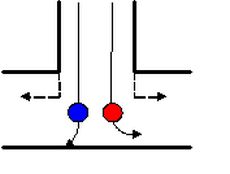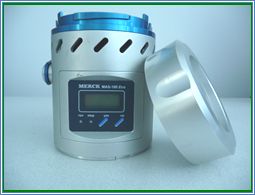Misją Instytutu jest dzialalność naukowo-badawcza prowadząca do nowych rozwiązań technicznych i organizacyjnych użytecznych w kształtowaniu warunków pracy zgodnych z zasadami bezpieczeństwa pracy i ergonomii oraz ustalanie podstaw naukowych do właściwego ukierunkowywania polityki społeczno-ekonomicznej państwa w tym zakresie.
Knowledge base search
The general requirements for the measurement of microorganisms and microbial compounds based on air sampling performed at workplaces are given in EN 13098:2019, EN 14031:2021 and EN 14583:2021.
EN 13098:2019: "Workplace exposure - Measurement of airborne microorganisms and microbial compounds - General requirements"
This document specifies general requirements for the measurement of microorganisms and microbial compounds. This document provides also guidelines for the assessment of workplace exposure to airborne microorganisms including the determination of total number and culturable number of microorganisms and microbial compounds in the workplace atmosphere.
This document does not apply to the measurement of viruses.
EN 14031:2021: "Workplace exposure - Quantitative measurement of airborne endotoxins".
This document specifies methods for the quantitative measurement of airborne endotoxins and gives general requirements for sampling on filters, transportation, storage as well as the analysis of samples.
This document provides also guidelines for the assessment of workplace exposure to airborne endotoxins.
EN 14583:2021: "Workplace exposure - Volumetric bioaerosol samplers - General requirements and evaluation of performance"
This document specifies general requirements for the evaluation of volumetric bioaerosol samplers in order to assess workplace exposure and their physical and biological performance. This document describes the procedures for the development of volumetric bioaerosol samplers as well as their properties and validation. This document provides a description of a test facility and selection criteria for microbial strains that can be used to assess their biological performance. This document addresses requirements to manufacturers and developers of volumetric bioaerosol samplers as well as to test facilities with the equipment and skills to carry out the performance measurements of these samplers (see Annex D for application guidance).
This document is not intended for operators who use volumetric bioaerosol samplers to carry out exposure measurements for workers in occupational settings.
This document is not applicable for clean room measurements other than for occupational safety.
In each environment, the specific properties (physical and biological) of bioaerosol particles determine the method of their collection. In accordance with contemporary requirements for microbiological air pollution testing, it is recommended to use volumetric methods, which consist of sampling of a certain volume of the air.
Techniques most frequently used for bioaerosol sampling include:
Impaction, in which the separation and subsequent collection of particles from the air stream onto a solid substrate, such as microbiological medium or sticky surface, occurs by inertial forces. In impaction method, the particles are separated from air based on their sizes. Impaction is one of the most commonly used methods for bioaerosol sampling. The most commonly used impactor for sampling airborne culturable bacteria and fungi is an Andersen impactor, which uses one, two or six impactor stages containing Petri plates filled with appropriate agar medium.

Impaction

A six-stage Andersen Cascade Impactor
Impingement, i.e. impaction into a liquid medium. This method is characterised by high physical and biological efficiency of particle collection. The most common medium used in this method is water, liquids of similar viscosity to water, as well as non-evaporating liquids with viscosity many times higher than that of water (e.g. "light" or "heavy" mineral oil). Water and liquids similar to water evaporate quite quickly, so when using them, the duration of sampling should be reduced. The use of liquids with a low evaporation rate (e.g. glycerol) allows for longer sampling times for biological aerosol. The most commonly used impingers are AGI-4, AGI-30, BioSampler and Coriolis µ.

Impingement
Filtration, i.e. separation of particles from the air stream flowing through a porous medium in the form of a filter; due to its simplicity, low cost and wide range of applications, filtration is also widely used technique for sampling biological aerosols. The filters most commonly utilized in bioaerosol measurements include those of polycarbonate, gelatin, Teflon, polyvinyl chloride, cellulose acetate, cellulose ester mixtures, as well as filters made of carbon nanotubes. The most commonly used filtration-based instruments are the Button Personal Inhalable Aerosol Sampler, GSP (Gesamtstaub - Probenahmesystem) sampling head and PAAS (Personal Aeroallergen Sampler).

Filtration

Button Personal Inhalable Aerosol Sampler
Electrostatic precipitation is an another sampling technique, in which the separation takes place as a result of electrostatic interactions with charged particles suspended in the air; this method has a high efficiency and is considered promising and forwardlooking due to the ‘gentleness’ of the particle collection process.


